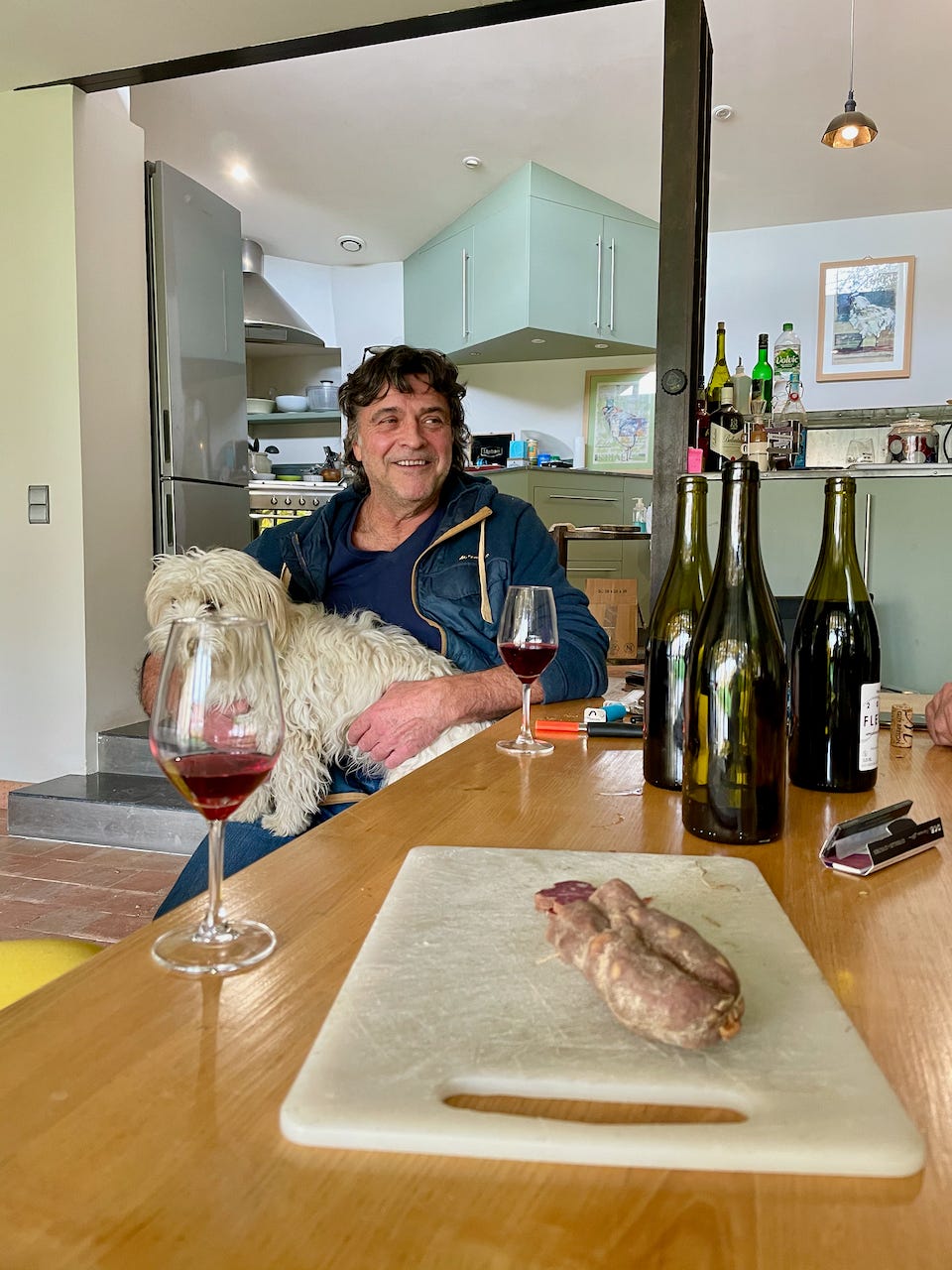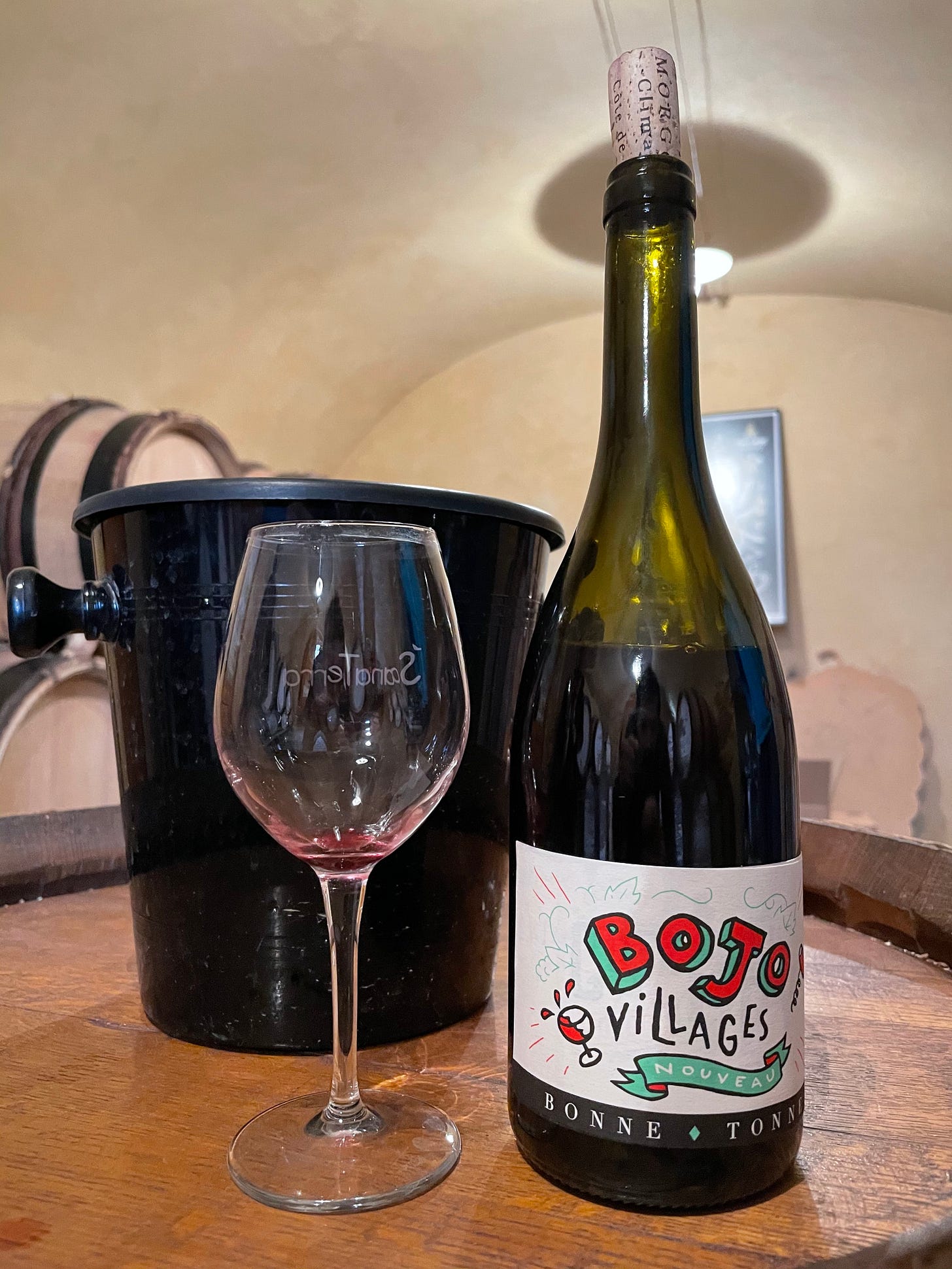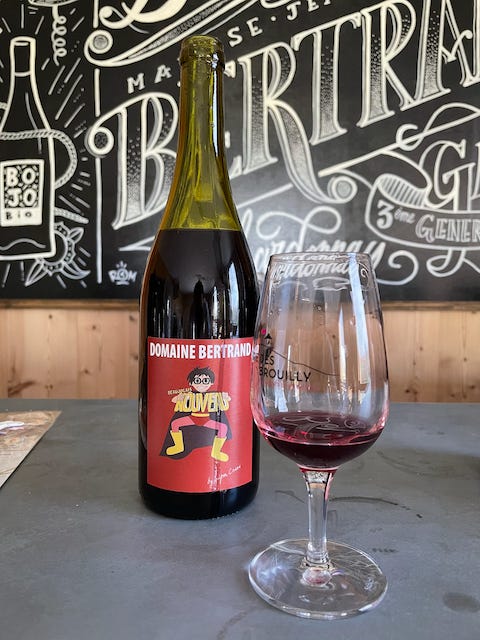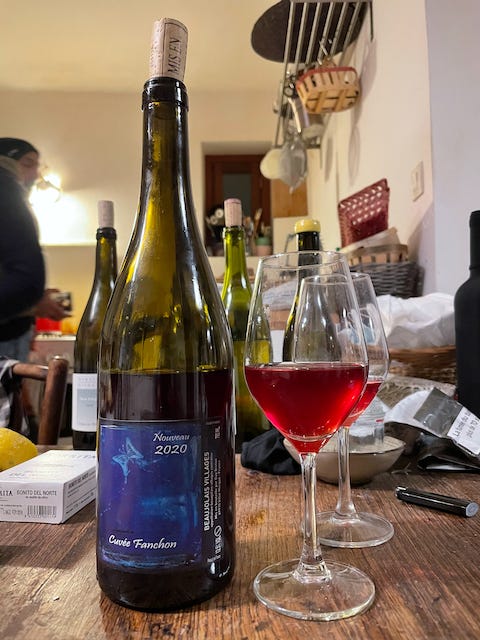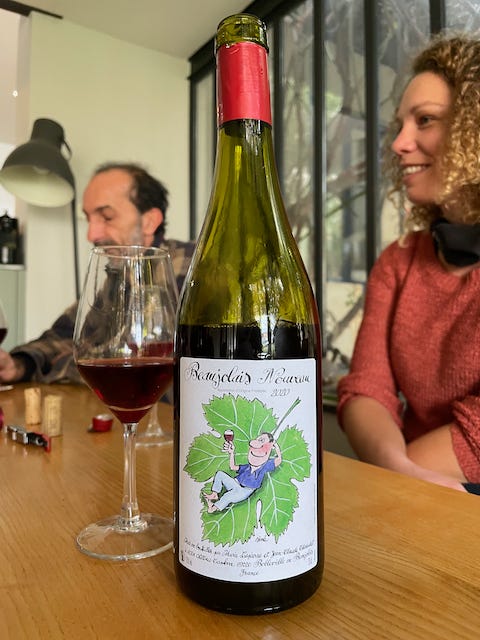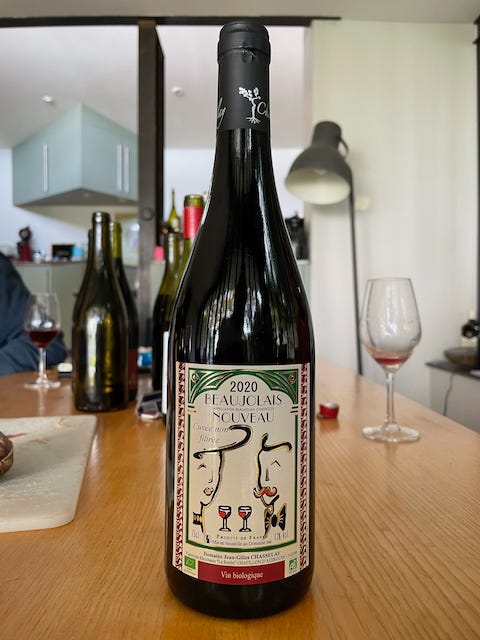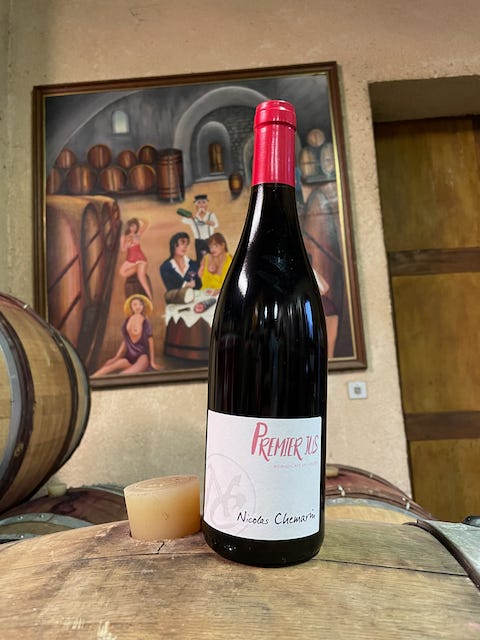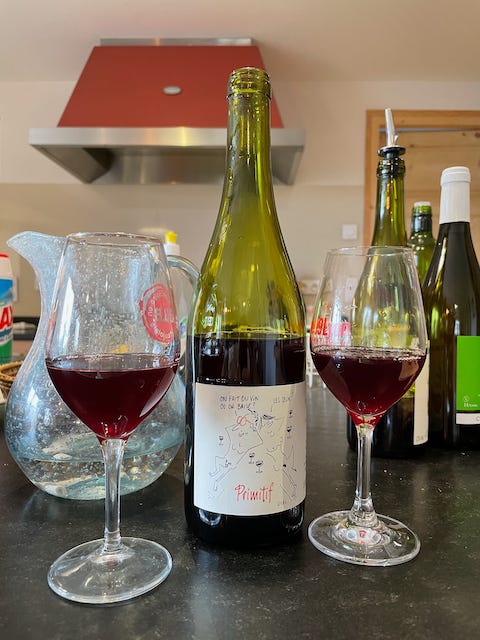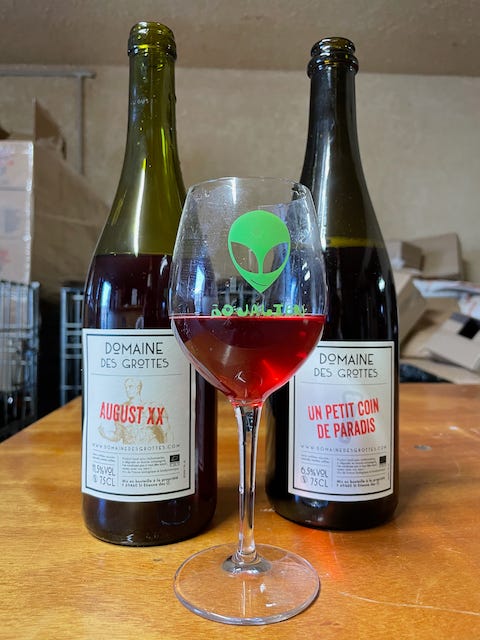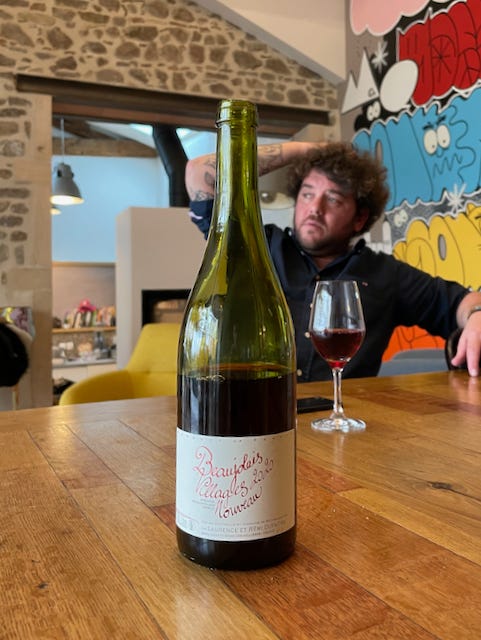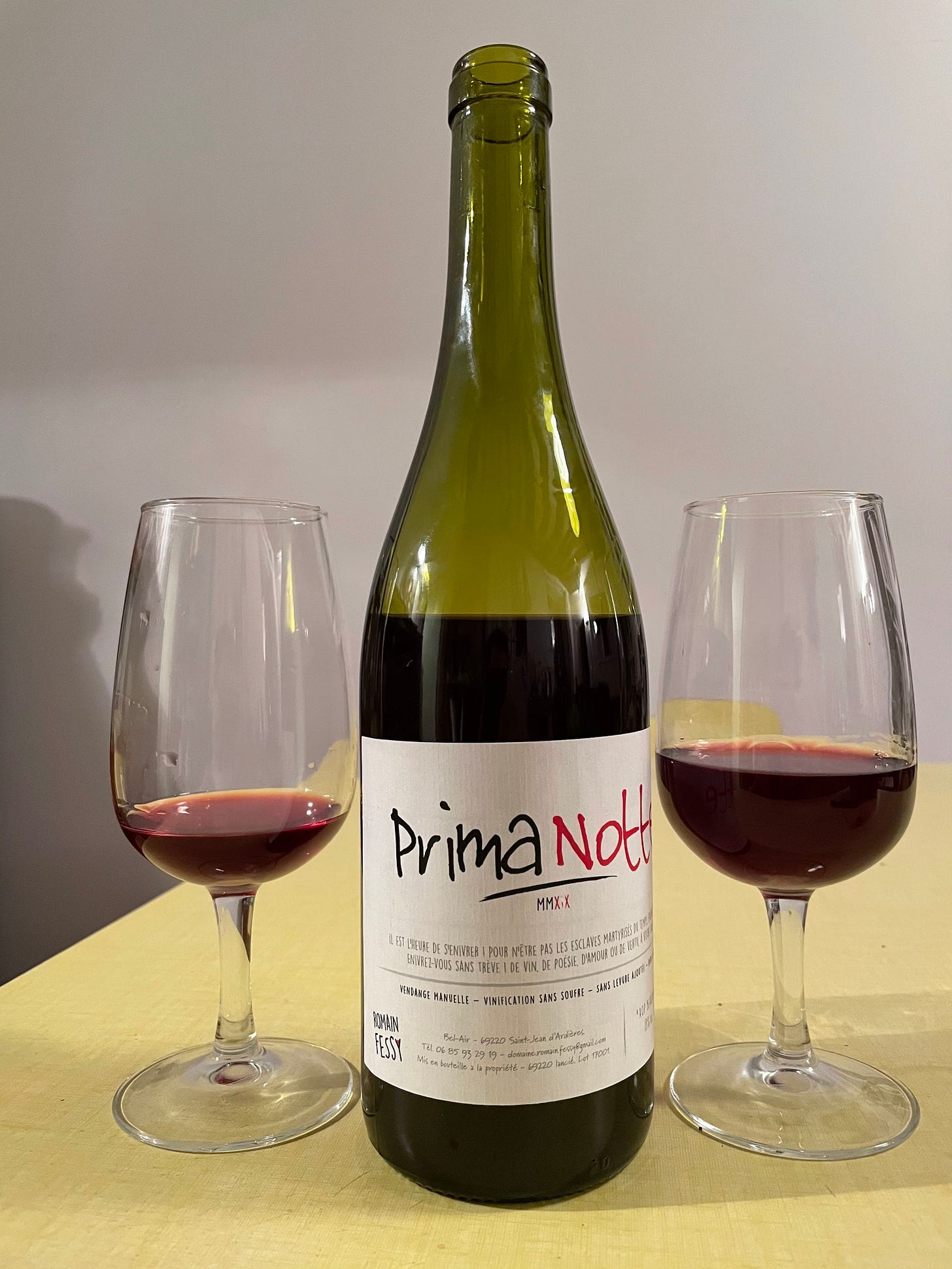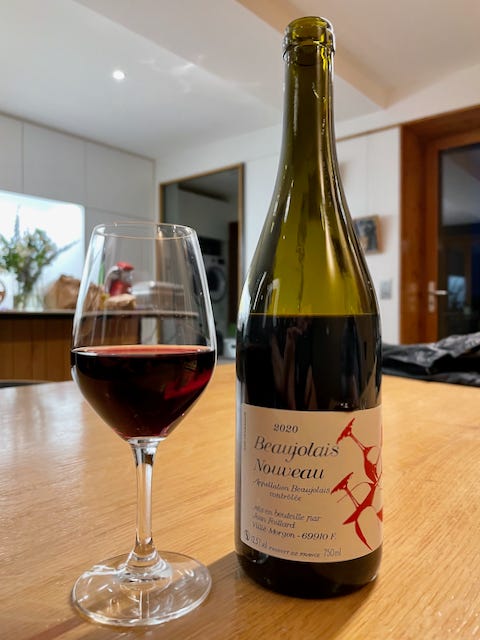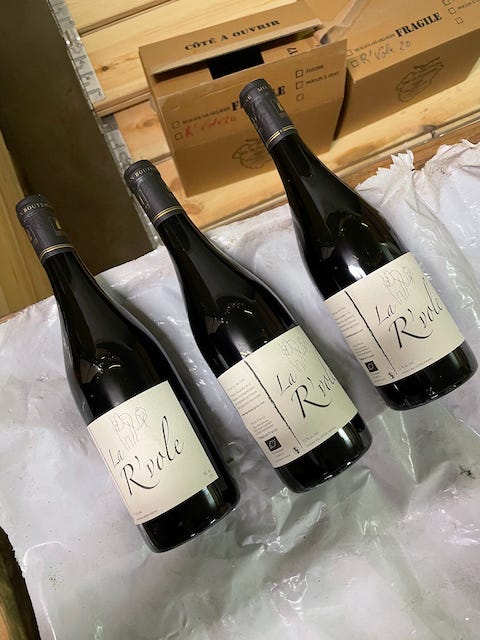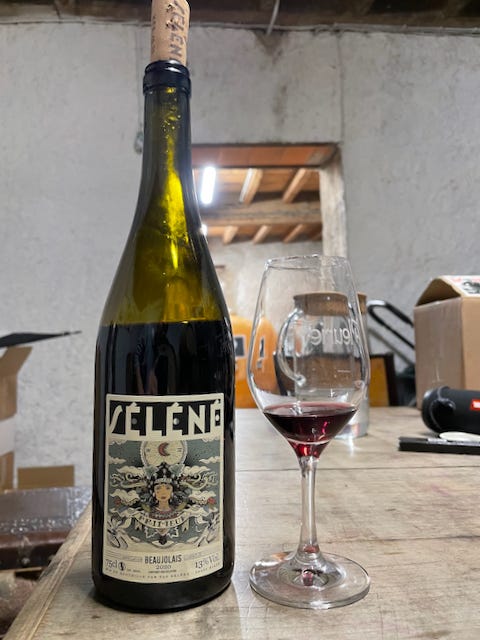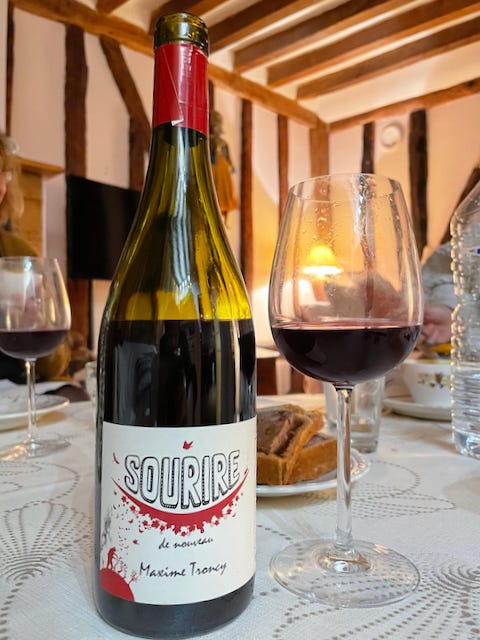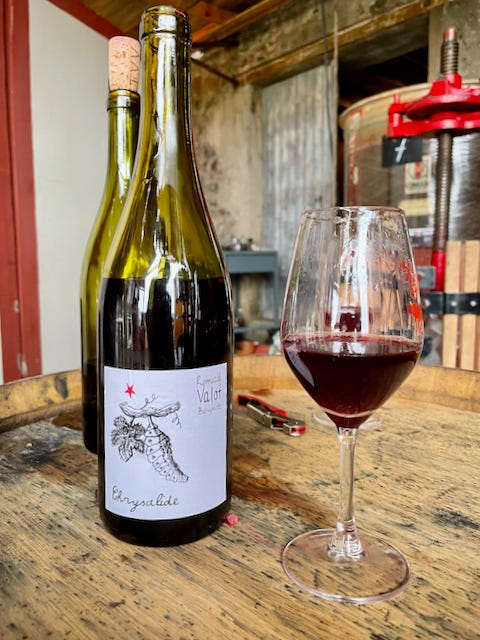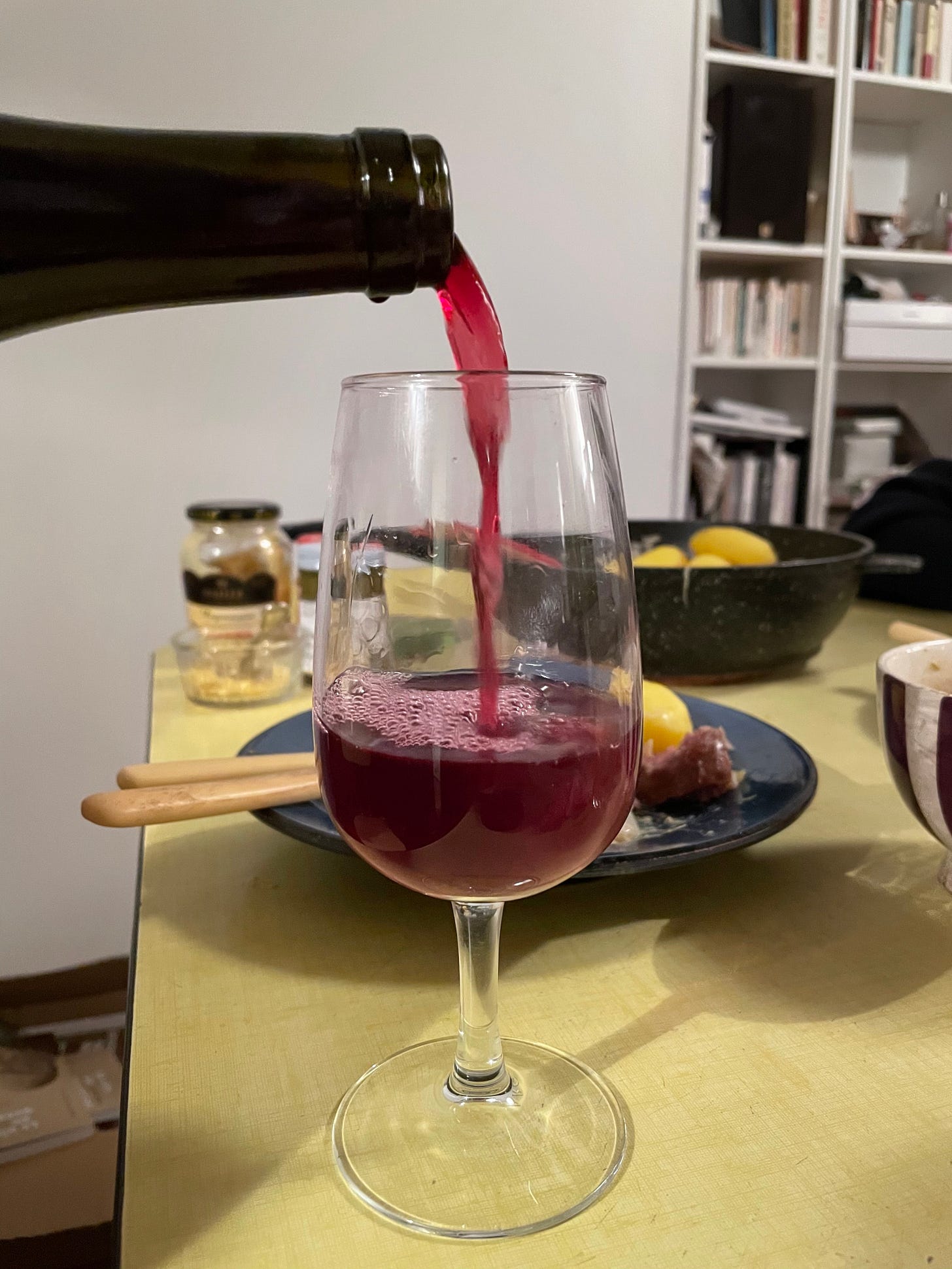Tasting: Natural Beaujolais Nouveau 2020
Everything I managed to taste before my car broke down.
Why, you might ask, did I spend the last week careening around the Beaujolais in an unreliable car, risking life and limb and hassles with the law, for the sake of tasting this year’s Beaujolais Nouveau, i.e. the least critically acclaimed wine style on earth?
Well, for one thing, I like Beaujolais Nouveau. Partly because it’s so divisive. Few other wine styles present such a chasmic gulf in quality between their conventional and natural iterations.
A Seasonal Pleasure
Conventional Beaujolais Nouveau is indeed confected swill intended for liquor store promotions and office parties. True natural Beaujolais primeur is quite another product entirely, closer in spirit to a fresh truffle than any other, normally-aged wine. The pleasure it offers is necessarily fleeting and seasonal. The best natural Beaujolais primeurs offer a chiming upswell of redcurrant fruit, a tremolo of mouthwatering, post-fermentation acid.
The Olympic Sprint of Vinification
There are, of course, levels of naturalness, on which more in the individual reviews. But making Beaujolais Nouveau in a natural way is always the Olympic sprint of vinification. You have to get this unpredictable fermenting juice into bottle and shipped to clients in about 2.5 months - and with as few winemaking shortcuts as possible. This challenge brings out a spirit of competition among the region’s natural winemakers. They know it’s a fundamentally unserious wine. But they want to make the best fundamentally unserious wine.
The November Chill
I began following this little competition back during the infamous Beaujolais Nouveau Death Marches that my friend and erstwhile editor, Paris by Mouth founder Meg Zimbeck, used to organize in Paris on the night of its release. We’d gather friends and hike through the November chill to visit the city’s historic natural wine bars, most of which throw parties featuring natural winemakers from the Beaujolais. There are usually accordion sing-alongs, heaping plates of charcuterie, and a pervading sense of paysan camaraderie among the revellers. It’s the one night of the year you see Parisians cheerfully sharing bottles with strangers.
That won’t happen this year. The second COVID lockdown means bars and restaurants throughout France are closed and social gatherings are banned, until at least December 1st. It’s a different kind of chill, this November.
“This year, with the COVID, there are some who are going to go under because they can’t sell their primeur,” notes Jean Foillard. “There are vignerons who have vines exclusively in the Beaujolais appellation, in the south, who sell half of it in Beaujolais primeur.”
“In France, 70% of our sales are to Paris,” explains Kéké Descombes. “And 80% of that is to restaurants. We’re still selling a bit, we’re not dead, because the wine shop sales have really developed a lot in the past few months. But we can’t have this last two years.”
That’s the other reason I went the distance to taste the primeurs this year. Most Beaujolais winemakers are facing a massive drop in sales to restaurants within France. It seemed a nice time to highlight how much technique and finesse these guys put into their least serious wines.
NATURAL BEAUJOLAIS NOUVEAU 2020
What the ratings mean:
No chapeaux: Not a bad wine. Often a quite good wine, given the circumstances. But not necessarily something to chase down.
🎩: The kind of wine that makes you tip your hat and say “Chapeau.”
🎩🎩: Applause. The sort of wine admired by other winemakers.
🎩🎩🎩: A standing ovation, reserved for truly great wines.
⏳: This just means I felt it unfair to judge a given wine at a given time. The wine so plainly needed more time that I might as well have not even tasted it.
N.B. - This is by no means a complete list of the natural primeurs of 2020. It’s just what I managed to taste before my car broke down in Villié-Morgon. I’ll update it periodically as I taste more of the year’s primeurs.
DOMAINE DE LA BONNE TONNE - THOMAS & ANNE-LAURE AGATENSI - BEAUJOLAIS-VILLAGES NOUVEAU 2020
In 2019, longtime organic Morgon vigneron Marcel Grillet ceded responsibility of his estate to his daughter and son-in-law, Anne-Laure and Thomas Agatensi. The Agatensis’ 2020 primeur, from Beaujolais-Villages vines adjacent to the Régnié appellation, saw a long-ish, 14-day maceration, before clarifying for a few weeks in tank outside the winery. It maintains a brisk, wholesome lift on the palate, offering a lipsmacking, Concord grape-like fruit, characteristic of the Régnié area. Most important, though, is what this unfiltered, unsulfited primeur represents: a laudable willingness, on the part of the Agatensis, to make a true, frank primeur, taking their valuable organic viticultural heritage further into the natural world.
JULIEN BERTRAND - BEAUJOLAIS NOUVEAU “BY SUPER CANON” 2020
Julien Bertrand is the Charentay-based cousin of Fleurie’s Yann Bertrand. Like Yann, Julien engages the consultancy services of the legendary peripatetic natural winemaker Jacques Néauport. Julien’s progress towards natural vinification has been less meteoric, partly a function of having more vineyard surface to convert to organics. This year, ten of his fifteen hectares will become certified.
His 2020 Beaujolais Nouveau “Super Canon” is thus his first officially organic wine, vinified and bottled without sulfites or other additives. It saw a seven-day maceration, kept between 15° and 23°. A light kieselguhr filtration before bottling thankfully didn’t dispel its zip of CO2. “Super Canon” retains a dancer’s step to its keen black cherry fruit.
RAPHAEL BEYSANG & EMILIE HURTUBISE - NOUVEAU LITRE 2020
I didn’t get a chance to get down to les Pierres Dorées this trip. So this was a bottle provided by my friend Oliver Lomeli of Paris’ zero-zero maestros Chambre Noire. The label says 12° alcohol but I expect it’s closer to 11.5° - such is the tremendous chuggability of Beysang and Hurtubise’ 2020 “Nouveau Litre.” Crisp, slightly ashen pomegranate fruit that moves like a waterfall. A savory, handbag-interior scent reveals itself after a bit. Probably an unobjectionable whiff of bret. Beysang tells me the wine macerated for two weeks, whole cluster.
GUY BRETON - BEAUJOLAIS-VILLAGES NOUVEAU “CUVEE FANCHON” 2020
🎩🎩
Guy Breton, a popular guy at any time of year, finds himself in especially high demand right after he bottles his primeur. Year after year, Breton produces the caviar of primeur, the perennial favorite among fellow vignerons. On the morning I visited, Cécile Valette of Domaine Valette happened to drop by to exchange a case of wine. Camille Lapierre, who joined us for the tasting, mentioned that a case of twelve bottles Breton had given her the other day was already almost gone.
His 2020 is 12.7° alcohol, unfiltered and unfined. It was harvested on August 26th and saw nine days carbonic maceration. With Breton these figures are misleading, however, because his primeur is primarily free-run juice (including juice taken from tanks of Régnié, Chiroubles and Morgon that macerate somewhat longer). This helps explain the lower alcohol (some of the alcohol of free-run juice is absorbed by the stems of the still-macerating grape bunches) as well as his primeur’s uncommon complexity. (Rarely do winemakers use cru juice for primeur.) Breton also uses cold more assertively than many of his peers. The grapes are refrigerated before vatting, and he employs a cold debourbage directly after press. He doesn’t hesitate to repeat a cold debourbage if he finds a juice remains too cloudy.
The 2020 “Cuvée Fanchon” (named for his younger daughter) is luminous, with a glowy white cherry fruit that belies its lowish alcohol.
“And it was refused the appellation,” Breton notes with a laugh. “They said it was oxidized.”
He didn’t mind at all. It was all already sold and shipped by then.
CHATEAU CAMBON - BEAUJOLAIS NOUVEAU 2020
Château Cambon is the estate Marcel Lapierre purchased with his friend Jean-Claude Chanudet in 1995, intended as sort of a diffusion range for Domaine Lapierre. Today it comprises 19.5ha and is run by Chanudet (who does the vinification) and Lapierre’s widow Marie. I tasted the wine with Camille Lapierre, however, because Marie was recovering in quarantine from a second bout with COVID. (I hear she’s doing okay, thank goodness.)
The wine macerates for about eight days, and derives from more clay-influenced soils in the flatlands northwest of Belleville. This is not really divine terroir. It’s destined for a coarser, quicker style of wine production, which is what Chanudet practices at Cambon. Grapes are harvested manually, but not into small cases, as is practiced for more ambitious wines. Instead they’re put into hottes (back-mounted containers) which are emptied into trailers. This entails a tad more breakage before vatting, a tad more oxidation, a tad less pure style of carbonic maceration.
The result is a slightly more workmanlike primeur, which also shows the influence of its flat clay terroir, lacking the verve and crunch more granitic soils give. It behooves us to consider, though, that Château Cambon is intended as sort of an entry-level natural wine. It’s the kind of thing that you’re very pleased to encounter when you’re not expecting to find any natural wine whatsoever, like when visiting relatives in rural Pennsylvania, for example.
FAMILLE CHASSELAY - BEAUJOLAIS NOUVEAU “CUVEE NON-FILTRE” 2020
Brother and sister duo Fabien and Claire Chasselay bring new dynamism each year to the organic Pierre Dorées estate where they succeeded their rock-and-rolling motorcyclist father Jean-Gilles. The family’s 2020 “Cuvée Non-Filtré” saw a fifteen-day cool-carbonic maceration and just 10mg of sulfites at bottling, a style more associated with their forebears in the northerly crus.
Belying its breathtakingly antiquated supermarket label, the Chasselays’ primeur is admirably radical: bright-fruited, unpretentious, saline with CO2. It’s a forthright and crisp, a countrified primeur from the south.
NICOLAS CHEMARIN - BEAUJOLAIS-VILLAGES NOUVEAU “PREMIER JUS” 2020
Having cheerfully toiled in semi-obscurity in the western hills of Marchampt for the first decade of his career, Nicolas Chemarin a.k.a. “Le P’tit Grobis” is enjoying more attention lately thanks to his association with the Paris distibution agency Culinaries. (I seem to have had some hand in this. I was Chemarin’s first Paris client in 2016, when I was consulting for the restaurant YARD. Later YARD was purchased by Culinaries, who swiftly signed Chemarin to an agency agreement.) With Culinaries’ encouragement, he’s produced more unsulfited cuvées lately, and branching out into experiments with macerated and sous-voile chardonnay.
His best work remains the wines he produces from the vines surrounding his winery in the underrated terroir of Marchampt. His 2020 “Premier Jus” derives from a nine-day maceration of Marchampt fruit, spiked with some longer-macerated old-vine press juice, because Chemarin felt it lacked a little body. Robust, dark, and somewhat tannic, it, well, doesn’t lack body. While pleasantly rustic, it doesn’t play to the strengths of Marchampt, one of the few zones of the Beaujolais that can still yield Beaujolais-style wines in an era of climate change.
SEBASTIEN CONGRETEL - VIN DE FRANCE “PRIMITIF” 2020
🎩
In 2019, Régnié-based vigneron Sébastien Congretel bottled his first primeur, “Primitif,” from Beaujolais-Village vines in Lantignié. It was also his first wine produced without added sulfites. (They were already unfiltered and unfined.) By 2020, Congretel extended the zero-zero approach to all his wines, perhaps realizing how much easier it is for a talented young Beaujolais vigneron to find new clients by daring to work more radically than his forebears.
The approach paid off again in the 2020 “Primitif,” bottled in mid-October. Paradoxically, for this hot vintage, it’s paler than the 2019, with a wirier acidity. The wine’s profile evinces Lantignié’s proximity to the high granite terroirs of Beaujeu, offering a toothier, geekier gamay with the spiky, astral tones of Modest Mouse guitars.
KEKE DESCOMBES - BEAUJOLAIS NOUVEAU “CUVEE KEKE” 2020
Kewin Descombes produces two primeurs, one of his own, and another that I did not taste, produced in collaboration with Fred Cossard for the Japanese market. The “Cuvée Kéké” primeur is a simply an early bottling of what later becomes the “Cuvé Kéké” Beaujolais. Undergoing a two-week whole-cluster maceration at ambient temperatures, the wine is dark, uncomplicated, with an affable grapey character. Non-filtration conserved breadth and texture. (Descombes decides whether to filter his primeur or not based on the vintage.)
DOMAINE DES GROTTES - VIN DE FRANCE “AUGUSTE” 2020
🎩
Romain des Grottes’ wines are all primeurs, in the sense that they are all bottled before the end of the year they’re harvested. But they’re not technically Beaujolais Nouveau, because none are produced within the Beaujolais appellation. I usually include his principal “Brut de Cuve” cuvée in the Beaujolais Nouveau category nonetheless, because it possesses the raw beauty of the best of them.
2020 will be a peculiar vintage for des Grottes, however. Following some vinification hiccups, “Brut de Cuve” will be fragmented into various different, one-off cuvées this year. In a strange personality switch, his early-harvest cuvée “Auguste” - which in previous years has been searingly volatile and lean - is in 2020 a surprisingly successful primeur, with a pale color and a trim sour cherry, kriek-like fruit, like a savage cousin of the work of Guy Breton. Des Grottes harvests “August” in mid-August, which in a normal year is about 2-3 weeks earlier than anyone begins harvesting. In 2020 is was only 3-4 days before his neighbors began harvesting.
The day after bottling, there was a slight mouse that came and went - la souris de la mise. Des Grottes wasn’t worried, because it hadn’t been present in tank, usually a sign it will disappear in bottle.
CHRISTIAN DUCROUX - VIN DE FRANCE “PROLOGUE” 2020 (1st bottling)
⏳
I wasn’t sure Lantignié biodynamic natural vigneron Christian Ducroux would have bottled any of his “Prologue” yet. And to be honest I was disinclined to ask, because it felt like a dumb question. Ask I did, however, and was rewarded with the opportunity to purchase six bottles of an early bottling of 1000 bottles, which Ducroux does for clients who want the wine in time for the release of Beaujolais Nouveau.
It doesn’t, however, feel right to me to judge his “Prologue” on the same timescale as other primeurs. It might be in bottle. But it needs a lot more time. The bottle I tasted with his son Théo was tightly coiled, reduced, lightly lactic - which is to say, it showed like his wines tend to show, right after bottling. Ducroux’s wines possess a compacted intensity that takes years to unspool. What’s fascinating is that the intensity doesn’t come from a long maceration or heavy pigeage. He macerates whole-cluster, for about a week. The richness of his wines would appear to derive largely from his maniacally well-farmed fruit itself. I recall tasting his grapes from the vine in August 2019 and being astounded as the persistence of the fruit in a fruit state.
Anyway. Buy these bottles when you can, and sit on them few a year or two.
REMI DUFAITRE - BEAUJOLAIS-VILLAGES NOUVEAU 2020
🎩
On the way to his house to taste his primeur, Rémi stopped to pick up the bottles from the basement of a construction site. He’s building a huge new cellar a few hundred meters from his house. (There must be some kind of extremely advantageous tax incentive at the moment for construction in the Beaujolais. Georges and Kéké Descombes are also both building huge new cellars. Jean Foillard finished his huge new cellar a year or two ago.)
Dufaitre’s 2020 Beaujolais-Villages Nouveau is a reminder of why his peers tolerate his grandstanding and general dickishness. This beast makes beauties. His 2020 primeur, a seven-day cold-carbonic maceration of fruit purchased in Charentay, is a bracing, aromatic knock-out, bursting with rose aldehydes. He wisely didn’t de-gas much, leaving the wine agile and fresh. A kieselguhr filtration before bottling was evidently conducted with masterful expertise, for it left the wine surprisingly intact.
ROMAIN FESSY - BEAUJOLAIS “PRIMANOTTE” 2020
All free-run juice from Beaujolais tout court vines near Saint-Jean-d’Ardières from Romain Fessy, the estranged son of faded Brouilly impresario Henry Fessy and a disciple of Fleurie’s Julie Balagny. The laudably unfiltered wine shows sunny, rounded fruit, with a vaguely loamy, leathery finish. When I last saw Romain Fessy he was borrowing space in a conventional cuvage in Lancié. But I caught up with him as he delivered in Paris and learned he has taken on old-vines in the Fleurie “Moriers” lieu-dit along with a small surface of Moulin-à-Vent. Looking forward to what the future holds here.
JEAN FOILLARD - BEAUJOLAIS NOUVEAU 2020
Harvested end August, bottled the last week of October. Foillard makes around 20,000 bottles, which haven’t been exported to the USA since 2017. Like many of Foillard’s wines, this is a blend of estate and purchased fruit. The 2020 contains much less purchased fruit than usual, according to Foillard. The estate fruit derives from his vines in the lieu-dit of “Les Balmes” in Corcelles, right on the border of Morgon. “I vinify it always more or less the the same, that’s why it’s always vinous,” says Foillard. The grapes see refrigeration before a three-week carbonic maceration, which is indeed very long for a primeur. “It’s not a primeur like Max [Breton’s], which is always very light and fruity.”
This year was the first time Foillard has employed tangential filtration on the primeur. This type of filtration is a rarity within the natural wine world, for its high cost, the high volume it requires, and for its relative severity. Foillard is pleased with the results. “I find that immediately the wine tastes better than after a kieselguhr filtration. With kieselguhr there’s often a small taste of carton or dry paper on the mouth. And I don’t have it here.” He notes that it’s better to do one tangential filtration than two kieselguhr filtrations, as he sometimes does when the juice is too cloudy.
The wine is open, supple, its cherry-red fruit just slightly thinned out by filtration. It’s a well-crafted, crowdpleaser primeur. It won’t change hearts or minds, but nor does it seek to.
MICHEL GUIGNIER - VIN DE FRANCE “LA R’VOLE” 2020
As with his mentor Christian Ducroux, I wasn’t certain that Vauxrenard’s biodynamic workaholic Michel Guignier would have bottled his primeur just yet. But by lucky chance I ran into Guignier chez Romain des Grottes and he confirmed he had bottled it just the day before, on November 9th.
You could divide quality natural Beaujolais into two camps. One, led by Guy Breton, seeks through ingenious natural vinification artifice to impose an idealized primeur style upon any given vintage. The other camp includes Christian Ducroux, Romain des Grottes, and Michel Guignier, whose primeurs tend to reflect more the specific characters of given vintages.
Guignier’s primeur, upon release, perhaps best represents the qualities of 2020 itself: its dark color, its richness, its slightly diffuse finish, and its inky hint of bret. Produced from Beaujolais-Villages fruit in high-sited Vauxrenard, “La R’vole” (named for the regional slang for an end-of-harvest party) is textured and vinous, with a splendid acidity.
CARINE & MARCEL JOUBERT - BEAUJOLAIS NOUVEAU “CUVEE A L’ANCIENNE” 2020
Marcel Joubert’s daughter Carine has taken responsibility the longstanding Quincié natural wine estate in recent years. One suspects Marcel is still very much involved in the day-to-day, however, since nothing has changed about the wines: not the indelible use of Comic Sans on the label, not the tendency to degas a bit too far before bottling. Their weighty 2020 primeur is for those who might want to forget they’re drinking a primeur: with its diffuse cassis fruit, it is dark, round, and mouth-filling, rather like a “real” red wine.
SYLVERE TRICHARD - BEAUJOLAIS PRIMEUR 2020 (NEGOCE)
It had been a few years since I’d caught up with Sylvère Trichard of Séléné. Based in Blacé, where Beaujolais-Villages gives way to just Beaujolais, Trichard now farms 10ha, primarily based in the Villages appellation. Séléné was formerly a partnership with his friend the vegetable farmer Elodie Bouvard, but the two amicably ended the association in 2018.
Trichard produced two primeurs in 2020. I unfortunately arrived too late to taste the one derived from estate fruit: it had all already sold. There remained his primeur made from purchased fruit, from parcels in Charentay, Saint-Etienne-de-la-Varenne, and Lacenas. It saw a ten-day maceration that Trichard describes as semi-carbo, with a kieselguhr filtration before bottling.
The wine shows the deep coloration of the vintage. Somewhat rich for a primeur, it retains a pleasant grain despite filtration. Its profile remains just granitic enough (despite Lacenas fruit). A frank, dark primeur with a strong jawline - yet distinguished by Trichard’s estimable finesse in vinification.
MAXIME TRONCY - VIN DE FRANCE “SOURIRE DE NOUVEAU” 2020
Saint Aubin vigneron Julien Altaber told me on Monday about his friend (and grape source) Maxime Troncy, a Cogny vigneron in the process of organic conversion and already producing natural cuvées. By Friday, Troncy had deposted a three cases of wine at the house where I stay in Lancié, with the understanding that I was to mule two of them back to Altaber on my way back through Burgundy. I was unfortunately out of the house when he dropped off the wine, so I’ve still yet to meet Troncy in person.
His 2020 primeur, “Sourire de Nouveau,” is a brawler: richly coloured, extractive, thickly primary, it’s bears an agreeable likeness to the wines of Legny vigneron Julien Merle. Big lees in suspension, but impressively healthy lees. A meal in itself.
ROMUALD VALOT - BEAUJOLAIS-VILLAGES NOUVEAU “CHRYSALIDE” 2020
Romuald Valot’s Beaujolais-Villages Nouveau “Chrysalide” is the product of a seven-day maceration of Beaujeu fruit in cement tanks. Valot describes his vinification style as “infusion,” which in his case means whole-cluster, without pigeage or foulage, removing the free run juice once fermentation has begun.
It makes the richness of “Chrysalide” all the more surprising; I can only assume it derives from the hot vintage and his very, very low yields. (Valot is also a partisan of non-treatment of his vines.) Even for a primeur, “Chrysalide” possesses an unfinished quality, along with a dry ink note on the nose that speaks of bret influence. I enjoy these wines in the way one follows the plot of a good horror movie: you genuinely do not know what is going to happen next.
CYRILLE VUILLOD - ??? 2020
🎩
Here’s another from Oliver Lomeli from Chambre Noire. This one came without a label, because it appears Vuillod will probably sell it without the primeur designation on the label. (So as to be able to sell it after the usual commercial expiry date of a primeur.) That’s 2020 for you. This perceptibly hails from more mature and / or well-tended and / or lower-cropped vines than many primeurs. It’s perceptibly granite terroir. It is indeed a very well-built and fully realized wine for something bottled so soon. Mild, lightly reduced peach fruit, good CO2, a finish that kicks up the miniature chalk cloud of a gymnast’s feet. Well done.



